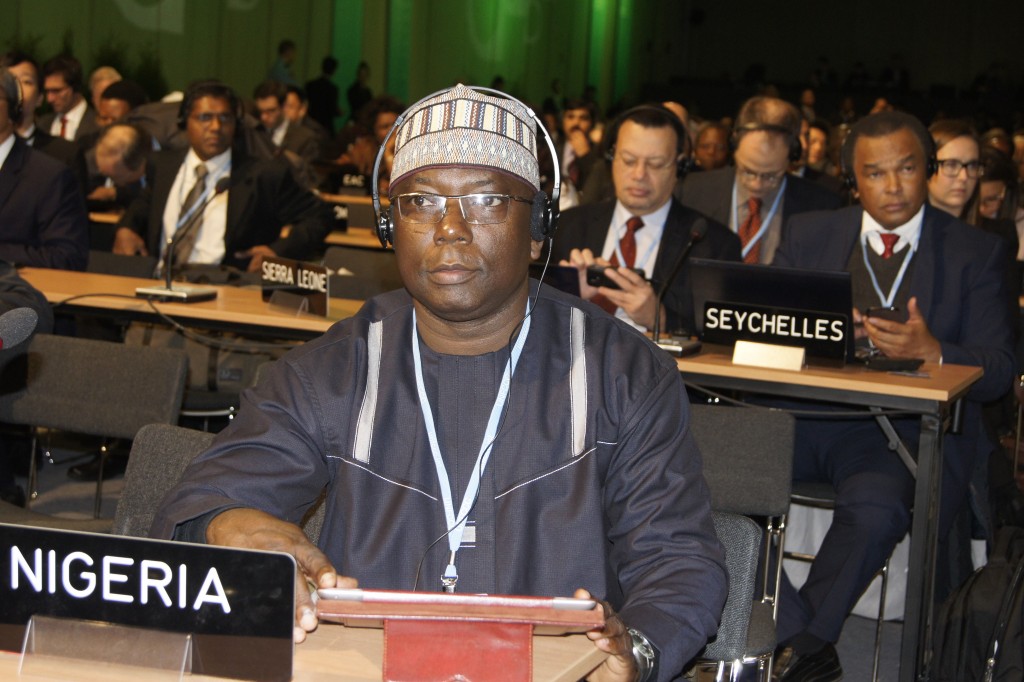The Nigeria Erosion and Watershed Management Project (NEWMAP) says it has reclaimed over 70 active gully erosion sites and 2,500 hectares (ha) of degraded land across the country.

Mr Salisu Dahiru, the National Coordinator of NEWMAP, disclosed this to the News Agency of Nigeria (NAN) on Tuesday, August 13, 2019 in Abuja.
Dahiru said that over 70 gully erosion sites and 2,500 ha of land were reclaimed in less than six years of the project’s implementation.
He said the ha of land were reclaimed through afforestation projects in the northern part, while civil work construction and bioremediation measures were carried out on the active gully sites in southeast.
He said that the projects were achieved through the $500 million given by the World Bank as an advance to cover phase one of the projects.
The national coordinator said NEWMAP got additional grant of $3.96 million from the Global Environmental Facility (GEF) and $4.63 million from the Special Climate Change Fund to support the projects.
According to him, the Federal Government also contributed $150 million equivalent as part of its counterpart contribution for staff salaries, trainings and office accommodation, among others.
He said the affected states also contributed a matching grant of about 10 to 12 per cent of the total cost of the civil works.
Dahiru recalled that a study earlier conducted on gullies in Nigeria revealed that over 3,000 active gullies were scattered in different parts of southeast alone.
He said that some of the gullies in the south east were as deep as 100 feet that could contain more than five-storey building and government’s attempt to recover some of these sites were not successful.
He said the advent of NEWMAP seven years ago to address the issues of active gully sites that threatened lives, property and infrastructure in the country had yielded “tremendous” results.
On success recorded on some of the severe and difficult gullies, he said: “Amachara, Neros plaza sites in Awka, Umuduna/Uruokpata Abagana among others have been reclaimed in Anambra State.
“Also, as part of NEWMAP success are the Ninth Mile Corner erosion site in Udi Local Government Area, Ajalli Water Worka site in Eziagu Local Government Area, Umueshi in Ideato South Local Government Area in Enugu State,” he said.
The national coordinator said severe erosion sites in Queen Ede and Oshiobugie in Auchi that claimed more than half of the city was also recovered successfully in Edo State by NEWMAP.
He said that Etim Umana gully site in Uyo metropolis in Akwa Ibom State, where major highways were threatened, had also been reclaimed.
“NEWMAP also reclaimed the Federal High Court, Ekwueme Square, expanded gully sites in Awka metropolis where the state secretariat, federal high court, government lodge, judges’ quarters were almost affected.
“Another erosion emergency site was Jibia in Katsina State where more than 20 lives, farmlands, infrastructure and property were lost as a result of erosion and flooding that occurred overnight.
“We have completed the design of the area and construction work will soon commence.
“Looking at the results recorded by NEWMAP in all of these severe gully sites, the issue is not the number of sites we reclaimed but the critical gullies we were able to handle and reclaimed,” he said.
Dahiru said that trees and grasses were planted in all these sites that were reclaimed, adding that NEWMAP project development objective was to address gully erosion and other forms of land degradation in targeted watershed.
“For each of the watershed where we have our project sites, we do catchment management plan which include tree planting, water harvesting, integrated livelihood activities in a manner that is in conformity with green revolution, making the environment sustainable.
“The idea is not for us to deal with all the gullies but to demonstrate how they can be sustainably done using the best technique and methodology that will give value for money and cost effectiveness.”
Dahiru said that, at the onset, the initial $500 million given by the World Bank was earmarked for 11 states in the entire project lifespan.
He said that, due to the progress made in the initial seven mover states, Abia, Anambra, Cross River, Ebonyi, Edo, Enugu, and Imo through the fund, it was later spread to cover 19 additional states.
“At the onset many states applied to partner with the project but then the project only accommodated the initial seven states.
“Based on the outstanding results of great physical achievement in participating seven states, more states such as Delta, Oyo, Sokoto, Gombe, Plateau, Kogi and Kano came on board in 2015.
“In 2016, Akwa Ibom, Borno, Katsina, and Niger were cleared to participate, and Ondo also joined the project in 2018.”
He said that, going by the success rate of these projects and efforts of the Federal Government and other critical stakeholders, the World Bank Group (WBG) approved additional fund for the projects.
Dahiru said the additional fund would be used to scale up investments in gully restoration, integrated watershed management and supporting livelihoods consistent with sustainable land management practices.
“The additional finance will continue to support the government in building its resilience to climate change.
“Part of the additional finance will also be used to develop opportunities for future watershed and landscape management support in arid and semi-arid in the northern part of Nigeria.”
He said that NEWMAP would not take any additional states for now due to unavailable funding and because of the expiration date of the project by 2021.
By Francisca Oluyole
